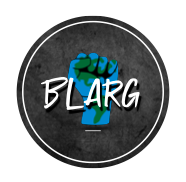The Brookhaven Landfill is a waste crisis.
Humanity faces a global waste crisis, as landfills and dump sites overflow with material stuff, especially single-use items that are rapidly used and discarded. Long Island faces especially urgent pressures to do something about its waste problem, as landfills have been closed to household waste collection for decades but operating landfills continue to heap up toxic incinerator ash and construction and demolition wastes. Much waste generated on Long Island is shipped to landfills off the island, typically in underserved communities in other states.
There is no good place to put waste. Policies and strategies to facilitate reuse, repair, share, and regenerative solutions that help communities achieve zero waste and prevent the problem from growing worse are urgently needed here and all over.

Negative impacts of the Brookhaven Landfill on our Long Island community.
Health issues
CDC statistics estimate a person’s life span in North Bellport is 73.2 years, which is 20 years less than the longest-lived census tract on Long Island, which is predominantly white.
The incinerator ash that the Brookhaven Landfill currently accepts emits cancer-causing, hormone-disrupting, and irritating gases, as well as toxic fine-ash particles that are easily carried through the air. Of all communities in Suffolk County, North Bellport’s asthma-included ER visitation rate is the second-highest. The landfill’s constant diesel truck traffic, gas flaring and landfill odors have been identified by public health experts as harmful to residents’ lungs and can lead to development of asthma.
The landfill began accepting 10,000 tons of sewage sludge per month from New York City and other parts of Long Island in June 2010, until noxious odors prompted an evacuation of Frank P. Long School in March 2011. Following this health crisis, New York state revoked the town’s permit to accept the sludge. At Frank P. Long Intermediate School, more than 30 staff members have been diagnosed with cancer since 1998, some of whom have died. There is a 2019 short documentary available to watch on tubi all about this particular issue.
Environmental racism
North Bellport is a predominantly Black, Indigenous, and Latinx community located on Indigenous Unkechaug Land. It was originally a predominantly Black community that emerged out of real-estate blockbusting and community segregation practices in the 1950s. Since then, North Bellport has been disproportionately targeted by industrial development of all kinds and is most proximate to Long Island’s largest operating landfill—the Brookhaven Landfill.
The Price of Proximity
Respiratory related complications. With cancer, causing incinerator ash, toxic, fine ash, North Bellport asthma included ER visitation rate is supplemented by the ridiculous rates of exposure. Reoccurring diesel truck traffic to and from the landfill, coupled with the intrusive odor direct from the plot of land, have been recognized as candidates for the health complications and asthma development in the community. The noxious odors and harmful gas is omitted, prompted and evacuation of the local elementary school. Exemplifying the direct impact on youth in the town from the hazardous chemicals.
Compromised waterways. The toxic leachate from the rain water runoff leaks into the ground water and local waterways, damaging both human and wildlife contact. There is a significant level of ammonia and other harmful contaminants found in the water. With some cells of the landfill still leaking hazardous chemicals into the ground water, the opportunity to fish a healthy bountiful catch has been compromised. A direct influence on the local community for both human and animal.






